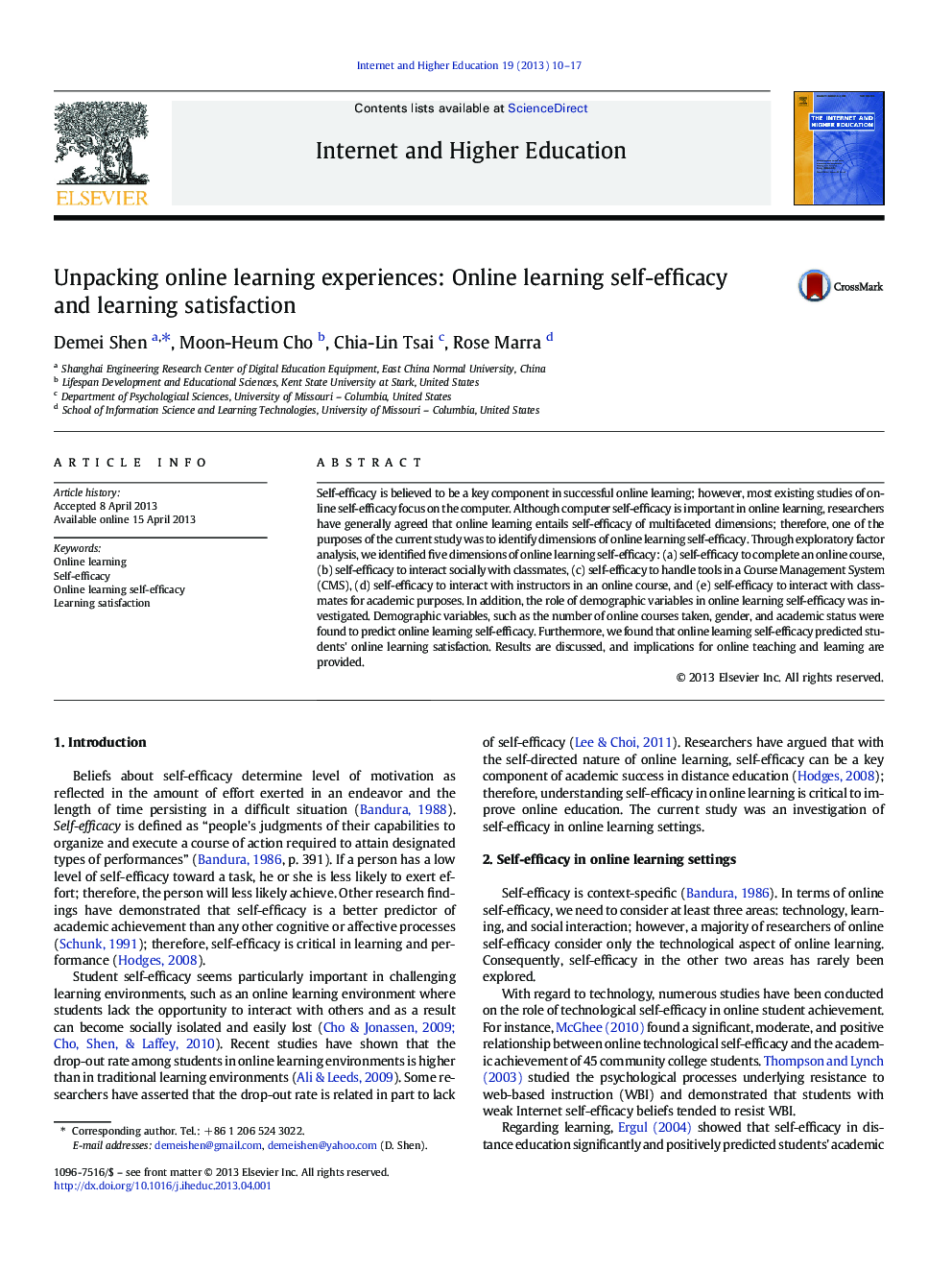| Article ID | Journal | Published Year | Pages | File Type |
|---|---|---|---|---|
| 357762 | The Internet and Higher Education | 2013 | 8 Pages |
•The study shows that the online learning self-efficacy is multidimensional.•Online learning self-efficacy is explained with five dimensions.•Gender, number of online courses taken, and academic status predict self-efficacy.•Online learning self-efficacy explains learning satisfaction.
Self-efficacy is believed to be a key component in successful online learning; however, most existing studies of online self-efficacy focus on the computer. Although computer self-efficacy is important in online learning, researchers have generally agreed that online learning entails self-efficacy of multifaceted dimensions; therefore, one of the purposes of the current study was to identify dimensions of online learning self-efficacy. Through exploratory factor analysis, we identified five dimensions of online learning self-efficacy: (a) self-efficacy to complete an online course, (b) self-efficacy to interact socially with classmates, (c) self-efficacy to handle tools in a Course Management System (CMS), (d) self-efficacy to interact with instructors in an online course, and (e) self-efficacy to interact with classmates for academic purposes. In addition, the role of demographic variables in online learning self-efficacy was investigated. Demographic variables, such as the number of online courses taken, gender, and academic status were found to predict online learning self-efficacy. Furthermore, we found that online learning self-efficacy predicted students' online learning satisfaction. Results are discussed, and implications for online teaching and learning are provided.
